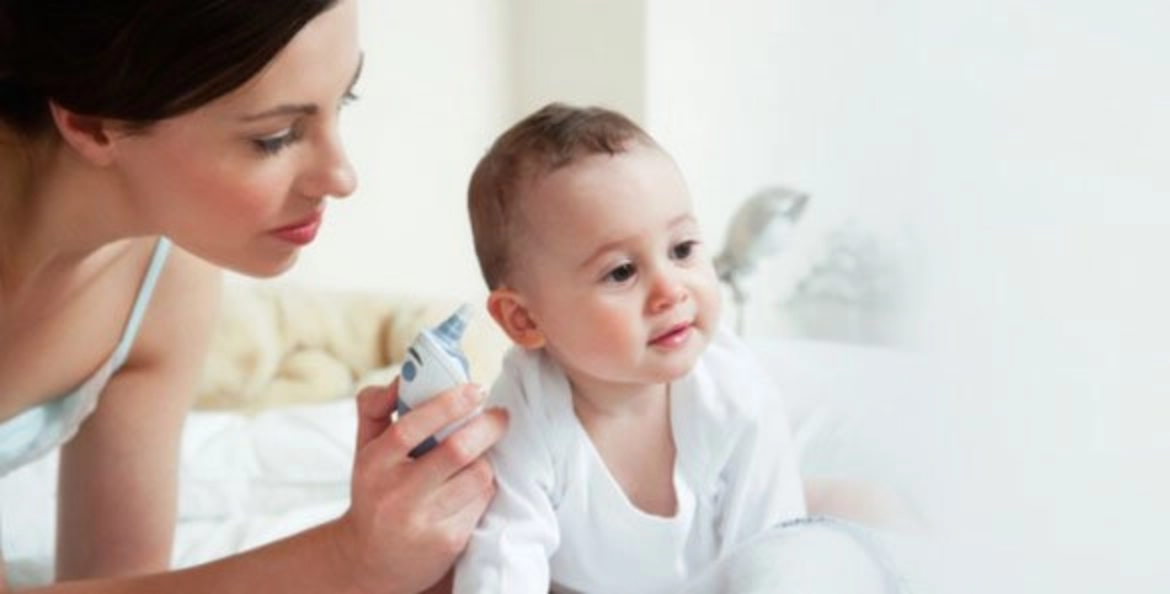Earaches can be a distressing experience for children and infants, as well as their parents and caregivers. But you're not going through it alone! This article aims to provide you with a comprehensive understanding of the common causes and symptoms of earaches in young ones.
We’ll also explore ear pain relief options and prevention strategies to help keep your little ones comfortable and healthy. Of course, please consult with your pediatrician if you have any questions or concerns.
What causes earaches in babies & children?
Earache in infants and children can be caused by a variety of factors, ranging from minor issues to more serious conditions. Understanding the common causes can help you identify the source of your child's discomfort and take appropriate action. Here are some of the most frequent reasons children experience earaches:
Buildup of ear wax[1]
Earaches are a common symptom of excessive ear wax build up in the ear canal. While ear wax is a natural substance that helps protect the ear, too much of it can lead to irritation and hearing issues.
Air pressure changes[2]
Rapid changes in air pressure – like during air travel – can cause ear pain. This is because the pressure inside the ear doesn't equalize as quickly as the pressure outside, leading to discomfort.
Foreign objects[3]
Children, especially younger ones, may insert small objects into their ears, which can cause pressure, irritation, or a scratch. This can lead to pain and a potential ear infection. Seek emergency help from a health care provider if your child has inserted a foreign object into their ear or if your child is experiencing severe pain, bleeding, drainage, fever or other signs of infection
An infection in the ear[4,5]
Otitis Media: This is an infection of the middle ear, which is the area behind the eardrum. It often occurs when fluid builds up, creating a breeding ground for bacteria or viruses. Symptoms can include fever, irritability, and difficulty sleeping.
Otitis Externa (Swimmer’s Ear): This is an infection of the outer ear canal, usually caused by water remaining in the ear after swimming or bathing. It can lead to itching, redness, and pain, especially when the ear is touched or pulled.
Teething[6]
Teething can sometimes cause ear discomfort. As the teeth emerge, the pressure and inflammation in the gums can radiate to the ears, making them feel sore. Babies may pull at their ears.
Ear trauma[7]
Children’s ear aches can also be due to physical trauma to the ear, such as a blow or a loud noise, that causes pain and injury. This can be particularly concerning in infants and young children who are more vulnerable to such injuries.
Allergies and cold symptoms[8]
Allergies and colds can cause congestion and inflammation in the Eustachian tube, which connects the middle ear to the back of the throat. Postnasal drip and sinus pressure can also contribute to ear discomfort.
Why are earaches more common in children and infants?[9,12]
Earaches are more common in children and infants due to several factors:
The anatomy of the Eustachian tube in young children is shorter and more horizontal, making it easier for fluid to accumulate and infections to develop.
Additionally, infants and young children have less developed immune systems, which increases their susceptibility to infections. Frequent exposure to germs in daycare or school settings also raises this risk.
Behavioral factors, such as inserting small objects into their ears, can cause physical irritation or blockage.
Lastly, the pressure and inflammation from teething can sometimes radiate to the ears, causing discomfort.
Signs & symptoms of ear infection or earache in infants and children
If your baby or toddler has a painful ear infection, he or she may have a hard time eating or sleeping. Other signs your baby may have an earache or ear infection include:
Rubbing or tugging at ears
Difficulty sleeping or eating
Fever (100.4° F or higher)
Pain, tenderness, swelling or pressure inside ears
Crying more than usual
Fluid drainage from ears
Difficulty hearing
If you think your child has ear pain, or you see fluid coming out of the ear or swelling of the ear canal, reach out to your doctor for guidance.
What is an ear infection?
An ear infection is a bacterial or viral infection that occurs inside the ear, causing swelling and pain.[4] These infections often start with a with a cold, flu or other respiratory illness, which can lead to the buildup of fluid in the middle ear.
This fluid creates a breeding ground for bacteria or viruses, resulting in redness, swelling, earache, and sometimes a fever with temperatures up to 104° F. While your pediatrician may consider prescribing an antibiotic if appropriate, you may need to consider additional options to provide relief from the discomfort of an ear infection.[10]
How do ear infections occur?
The cause of ear infection in infants and children is often due to blockage of the Eustachian tube. This can be caused by:
Respiratory infections: Colds, flu, and other illnesses can cause the Eustachian tube to swell and become blocked.
Allergies: Allergic reactions can lead to inflammation and congestion, affecting the Eustachian tube.
Enlarged adenoids: Adenoids are glands in children that help trap germs. Located near the Eustachian tubes, they can become enlarged and block the tubes, leading to fluid buildup.[10,11]
Environmental factors: Exposure to smoke, pollution, or changes in air pressure can irritate the Eustachian tube, causing swelling and contributing to ear infections.
How long does an ear infection typically last?
Even though child and baby ear infections and earaches can be tough on parents and kids, most will usually get better on their own in a few days. However, the duration can vary:
Acute ear infections: Typically last for a few days to a week.[12]
Chronic ear infections: Can persist for several weeks or recur frequently.[13]
The body’s immune system can often fight off the infection, especially if it is viral. It’s important to monitor your child’s symptoms and consult a doctor if pain persists, fever is high, or if there are signs of complications. Your pediatrician can provide guidance on whether treatment is necessary and recommend pain relief measures to help your child feel better.
How common are children’s ear infections?
Ear infections are very common in children, especially those under the age of 5. In fact, they are one of the most frequent reasons parents take their children to the doctor. According to the National Institute of Health, five out of six children will have at least one ear infection by the time they are 3 years old.[14]
Are ear infections contagious?
Ear infections themselves are not contagious. However, the colds and respiratory illnesses that often precede them can be. If your child has a cold or flu, it’s important to practice good hygiene to prevent the spread of these illnesses.
Ear pain options & treatment tips for babies & children
When your child is experiencing ear pain, you want to do whatever you can to help soothe it. These remedies and earache-soothing tips may help. Again, talk to your pediatrician if you have any specific questions or concerns.
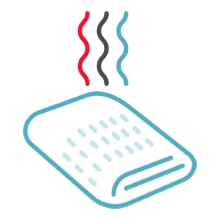
Warm compress
Place a warm, damp cloth or a towel-covered heating pad over your baby’s infected ear. Ensure the temperature is comfortable to avoid burns. The warmth can help relax the muscles around the ear canal and with the flow of fluids and ease the pain.
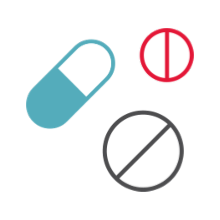
Pain relievers for infants & children
Relieving pain that can come from ear infections can be as simple as choosing an OTC pain reliever. These can be very effective in relieving pain and reducing fever. For infants and children, products like Infants’ TYLENOL® Oral Suspension Dye-Free and Children’s TYLENOL® Oral Suspension Dye-Free are options you can count on and safe when used as directed. Please talk to your pediatrician if these options are right for your child's ear pain. Note that if your child is under 2 years of age, you will need to ask the doctor for dosing information.
These medications contain acetaminophen, which can help alleviate head and body aches and lower your child’s temperature. Always follow the dosage instructions provided on the packaging or as directed by your healthcare provider.
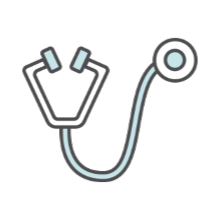
When to see a doctor for ear pain
Seek guidance from a healthcare provider by visiting your child’s pediatrician if you have any questions or if the earache lasts more than three days or if the ear ache is accompanied by drainage from the ear canal, a very high fever (102° or higher) or loss of hearing. You can also use the SmartCheck® Digital Ear Scope from Children’s TYLENOL® to take visuals of your child’s ear.
The accompanying SmartCheck® app helps guide you in how to use the digital otoscope so you can accurately record and share results with your provider from the comfort of home.
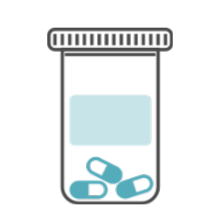
Antibiotics
Speak with your child’s pediatrician about their earache to see if a prescription antibiotic is necessary.
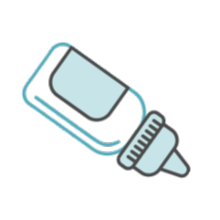
Ear drops
Ask your pharmacist or pediatrician if ear drops can help soothe your little one’s ear pain.
Additional home earache approaches to consider
Hydration: Encourage your child to drink plenty of fluids. Swallowing can help equalize the pressure in the ears and provide some relief.
Rest: Ensure your child gets plenty of rest. Resting can help their body fight off the infection and minimize overall discomfort.
Elevation: Keep your child’s head elevated, especially during sleep. This can help alleviate pressure and encourage fluid draining in the ear and make it easier for them to rest.[14]
Gentle massage: Gently massage the area around the ear and the neck to help relieve pressure and pain. Be careful not to put any pressure directly on the ear itself.
How to help prevent ear infections in infants & children
Try to prevent the cold or flu[15,16]
Preventing ear infections often starts by reducing the frequency of the common cold and flu by:
Vaccinations: Ensure your child is up to date with their vaccinations, including the flu vaccine.
Hand hygiene: Teach your child to wash their hands frequently and thoroughly to reduce the spread of germs.
Avoiding close contact: Keep your child away from others who are sick, especially during peak cold and flu seasons.
Bottle-feed infants in an upright position[17,18,19]
Feeding your baby in an upright position can help prevent ear infections.
Avoid lying down: Do not let your baby drink from a bottle while lying flat, as this increases the risk of fluid entering the middle ear.
Avoid secondhand smoke[17]
Exposure to secondhand smoke can irritate the Eustachian tubes and increase the risk of ear infections. Creating a smoke-free environment can significantly reduce this risk.
Keep your child’s ears dry
Moisture in the ear can create an environment where bacteria and fungi thrive, leading to infections.
Post-bath care: Gently dry your child’s ears with a soft towel after bathing or swimming.
Ear plugs: Consider ear plugs or a swim cap during swimming to keep water out of the ears.
Avoid using cotton swabs in ears and overcleaning
Using cotton swabs can push earwax deeper into the ear canal, potentially causing blockages. Overcleaning can also disrupt the natural balance of the ear.
Gentle cleaning: Clean the outer ear with a soft cloth, but avoid inserting anything into the ear canal.
Professional help: If you suspect earwax buildup, consult a healthcare provider for safe removal.
Use a pacifier wisely
While pacifiers can be soothing, frequent use may increase the risk of ear infections. Limit pacifier use, especially during the first year of life, and keep them as clean as possible.[20]
Use a humidifier
Dry air can irritate the nasal passages and Eustachian tubes, making them more susceptible to infections. A cool-mist humidifier can help keep the air moist and reduce irritation.
